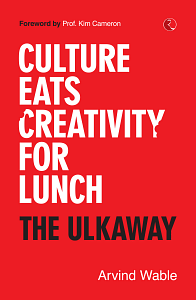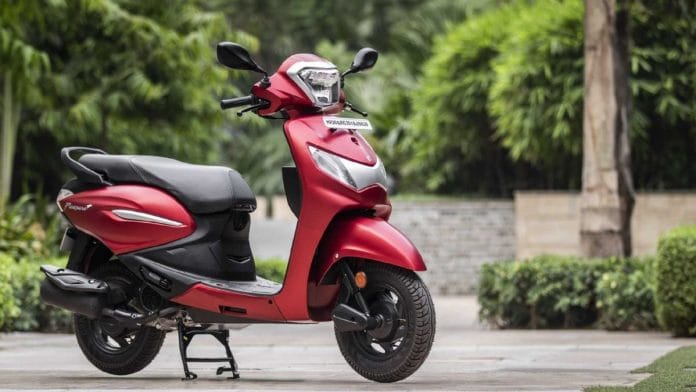Hero Honda, the largest and most dominant player in motorcycles, strategically decided to enter the growing scooter market in 2005. Historically, the scooter category commanded a significant market share in the 1970s and 1980s, almost 80 per cent of the two-wheeler market in India. However, by the turn of the century, its share had dwindled to less than 20 per cent.
This decline was attributed to a lack of product innovation in scooters and, significantly, the entry of fuel-efficient 4-stroke motorcycles in the early 1980s, spearheaded by Hero Honda itself, which launched its first motorcycle in 1983 with the iconic ‘Fill it. Shut it. Forget it.’ campaign created by Ulka. Hero Honda then went on to become the No. 1 brand and the largest manufacturer of motorcycles by volume sales globally, with over 50 per cent share of two-wheeler sales in India.
Ironically, Bajaj, which had held approximately 80 per cent of the scooter market in the late 1980s, also lost interest in the category and followed Hero Honda into motorcycles.
The revival of the scooter category came with the introduction of lightweight plastic body 70cc–80cc scooters like TVS Scooty and the entry of Honda in the early 1990s with the larger, heavier metal-bodied 150cc scooters. While TVS Scooty and similar brands in the less than 100cc segment were positioned as unisex vehicles, Honda Activa was directed
at the males and family segment.
Hero Honda wanted a significant share in the less than 100cc scooters, but was faced with the challenge of an undifferentiated product compared to the segment leader, TVS Scooty. The agency’s task was to devise a strategic positioning and a creative campaign to meet this objective. In line with Ulka’s campaign planning process, the agency team undertook
an extensive customer study, utilizing proprietary tools such as VIP (visual profiling) and Mind&Mood, in addition to data provided by the client. Two crucial insights emerged.
First, the study revealed a connection to the economic boom in the post-liberalization era, fuelled by the technology and service sectors which, in turn, created job opportunities for suitably trained young individuals beyond the metros, particularly in Tier 1 and Tier 2 towns. For the first time, a significant number of young women were entering the workforce, requiring mobility and access to colleges, professional training and workplaces. However, due to the absence of a good public transport infrastructure in the country, there was a growing demand for personal transport in upcountry markets.
Also read: Wives and supermodels—How IndiGo marketed to men in sales, IT, and consulting
The second insight stemmed from the intensive work conducted by the agency’s strategy team to understand the aspirations, motivations and constraints of young women in the context of the opportunities presented by the economic boom. One particularly striking revelation was the level of anxiety felt by young women about the differential treatment
they experienced from their families, especially when it came to going out of their homes. There was constant monitoring of their whereabouts, their companions, the timing of outings and the mode of transportation.
There was a strong insistence that they be dropped off and picked up by their father or brother. Notably, even younger brothers enjoyed more freedom of movement than the elder sister. Almost universally, girls had one question on their minds—why can’t we do what boys in general and our brothers in particular are doing?
In its pitch presentation, the agency not only recommended the positioning for the new scooter but also outlined potential consumer segments and their sizes from which Pleasure could gain volumes. We were confident that we had the right strategy in place and that the creative campaigns would deliver the desired results. The campaign was not an end in itself; it had to deliver tangible and measurable outcomes.
Another interesting aspect was that the creative campaign for Pleasure, like many others, was a collaborative team effort in line with the Ulkaway. It involved two offices, one contributing the idea of ‘Why should boys have all the fun?’ and the other developing its rendition in the TV commercial featuring Priyanka Chopra. More details on this collaborative process are presented in the next chapter.
The agency’s sharply segmented approach, targeting young women instead of the diffused unisex positioning adopted by competitors, led to the liberating creative idea of ‘Why should boys have all the fun?’ The supportive market potential data, diligently analysed by the agency, convinced the client that it was worth taking the risk of a sharply segmented positioning.
The results were indeed spectacular: Hero Honda Pleasure surpassed its sales target, reaching 92,977 units in 2006–07, and emerged as the fastest growing scooter brand.26 Furthermore, the same creative positioning was successfully refreshed in the subsequent three campaigns, propelling Pleasure to become the third-largest brand in the Hero Honda portfolio.







